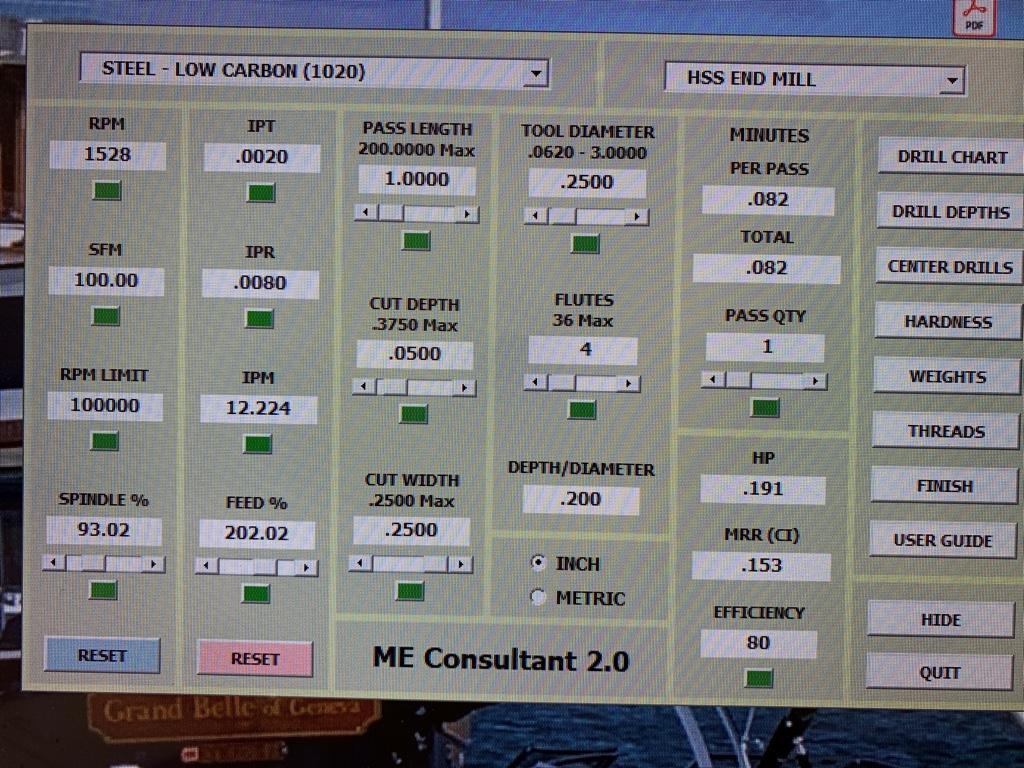- Joined
- Feb 5, 2018
- Messages
- 637
also some good quality end mills will make a huge difference.
I went up to a NEW 3/8" end mill. taking max .01 inch cut on what I assume is mild steel. There are so many variables to this hobby, it's making my head spin.
However, it's still making ragged edges at 1800 rpm or 850 rpm.
If I do the calculation using the chart from here: https://www.the-carbide-end-mill-store.com/Feeds-and-Speeds.html
420x3.82/.375 = 4277 RPM If this is true, then how do I machine steel with an 1800 rpm limit?
I leave my mill in 440 rpm ( i think) most of the time.View attachment 325085


